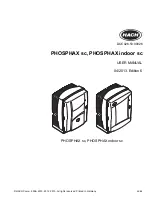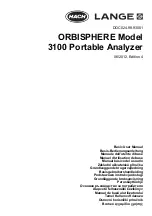
file. If the Route Exceptions were successfully corrected, there should no longer be a bold
(e) next to the route name, and there should not be a
Route Exceptions
tab on the
Route
Detail
screen. Again, it is not imperative to correct the Route Exceptions before loading the
route to a HHD, but the meters that are Route Exceptions will not be included with the rest
of the route that is loaded to the HHD.
The Five Required Fields
AutoRead requires that all the accounts to be read by the HHD, Vehicle or PhonRead
system have four basic pieces of information. These fields are Meter ID, Meter Type,
Account ID and Service Address. FieldLogic requires a fifth field, Service Type. This
information is necessary for the system to accurately apply the correct reading to each
meter.
1. Meter ID
The Meter ID is the Register Number of a meter. There are typically 2 numbers on Sensus
meters. One is stamped on the body of the meter casting and is commonly referred to as
the Meter Serial Number or brass number. The Meter Serial Number was a common way
of tracking meters before the advent of AMR systems. Because the meter readers had to
physically examine the meter itself to get the reading, it was possible for them to check this
stamped number in the meter when collecting readings to ensure they were at the correct
location.
Obviously, when reading a meter electronically, it is impossible for an AMR system to read
a number that is stamped into the bronze body of the meter. In addition, it is sometimes
necessary to change the register (or top part) of a meter. The register is the part of the meter
that has wheels which display the reading. Each Sensus register produced has a unique
register ID (also known as Meter ID) number. Sensus registers are known by the trade name
ECR, which stands for Encoder Register. No two ECRs produced by Sensus have the
same ID number. While it would be possible to make the Register ID match the Meter Serial
Number during production, often times the register (or top part) of a meter is replaced with a
new one and then the numbers would not match. As a result, typically the Register ID (also
known as Meter ID or ECR ID) of a meter will not match its Meter Serial Number.
Because the meter reading comes from the register part of the meter, this is the number the
Sensus AMR system uses to identify a meter and track readings. The AutoRead software
refers to this number as the Meter ID. As stated above, there are other common names
for this number such as ECR ID or Register ID. Billing software packages may also refer to
this number in different ways. Some billing software companies refer to this number as the
Touch Read number or EMR number. What is important to remember about this number
is that for any AMR system to work properly, the correct and EXACT Meter ID for every
meter must be known and recorded in the billing software in a consistent way. This number
must also be provided to the AutoRead software in the route file which is created by the
billing software, so that it can be loaded into the reading device. Again, it is important for
7 Additional Route Processing Options | 82
















































